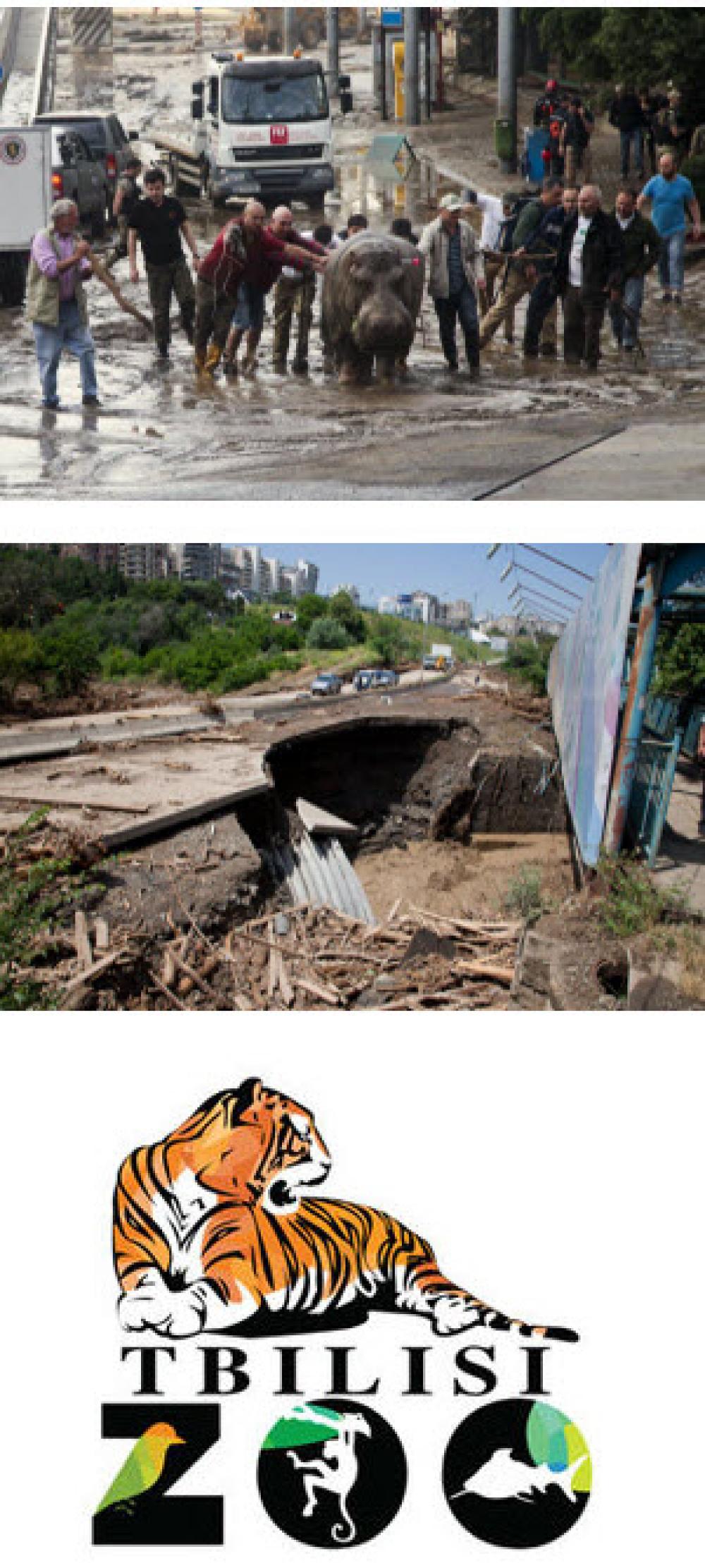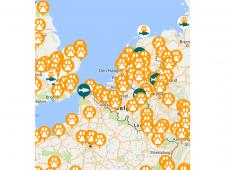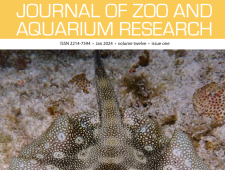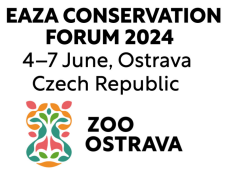News Archive
5 April 2017 _ EAZA response to Hannover Zoo
EAZA has issued a statement on reports in the German media regarding the management of elephants at Hannover Zoo.
April 2017 _ Best Practice Guidelines For Bird
The Falconiformes and Strigiformes TAG is proud to present their Husbandry and Management Guidelines For Demonstration Birds of Prey, as TAG specific response on the more general EAZA guidelines on the use of animals in public demonstrations (2014). These Best Practice Guidelines were developed in order to manage the husbandry of “demonstration birds of prey” and factor in all aspects of management that optimise the welfare of the participating bird or species as well as the wellbeing of the broader animal collection and native wildlife in surrounding areas. To ascertain key information as to what species were kept for bird displays, how they were managed, and why they were included, input was collected and collated from EAZA member institutions recognised for their demonstrations with free flight birds or experience with displays, raining or zoo management. The guidelines are specifically approved as BPG for the species that fall under the umbrella of the Falconiformes and Strigiformes TAG, although there are also references to other species used in demonstrations.
EAZA Best Practice Guidelines are produced by the various TAGs to merge expert husbandry knowledge and make it widely available within and outside the borders of the EAZA community. The guidelines show best practice standards, which EAZA zoos aim at achieving. They have been compiled using a template and made user-friendly to facilitate reading and the finding of necessary information. The guidelines are of particular interest when building new enclosures, when deciding upon the nutrition of animals or when seeking information on the biology of the species. EAZA members strive to house animals adequately to their needs and to give advice where needed to help further animal welfare. Please also check out the other EAZA Best Practice Guidelines available and view the EAZA Standards for the Accommodation and Care of Animals in Zoos and Aquaria.
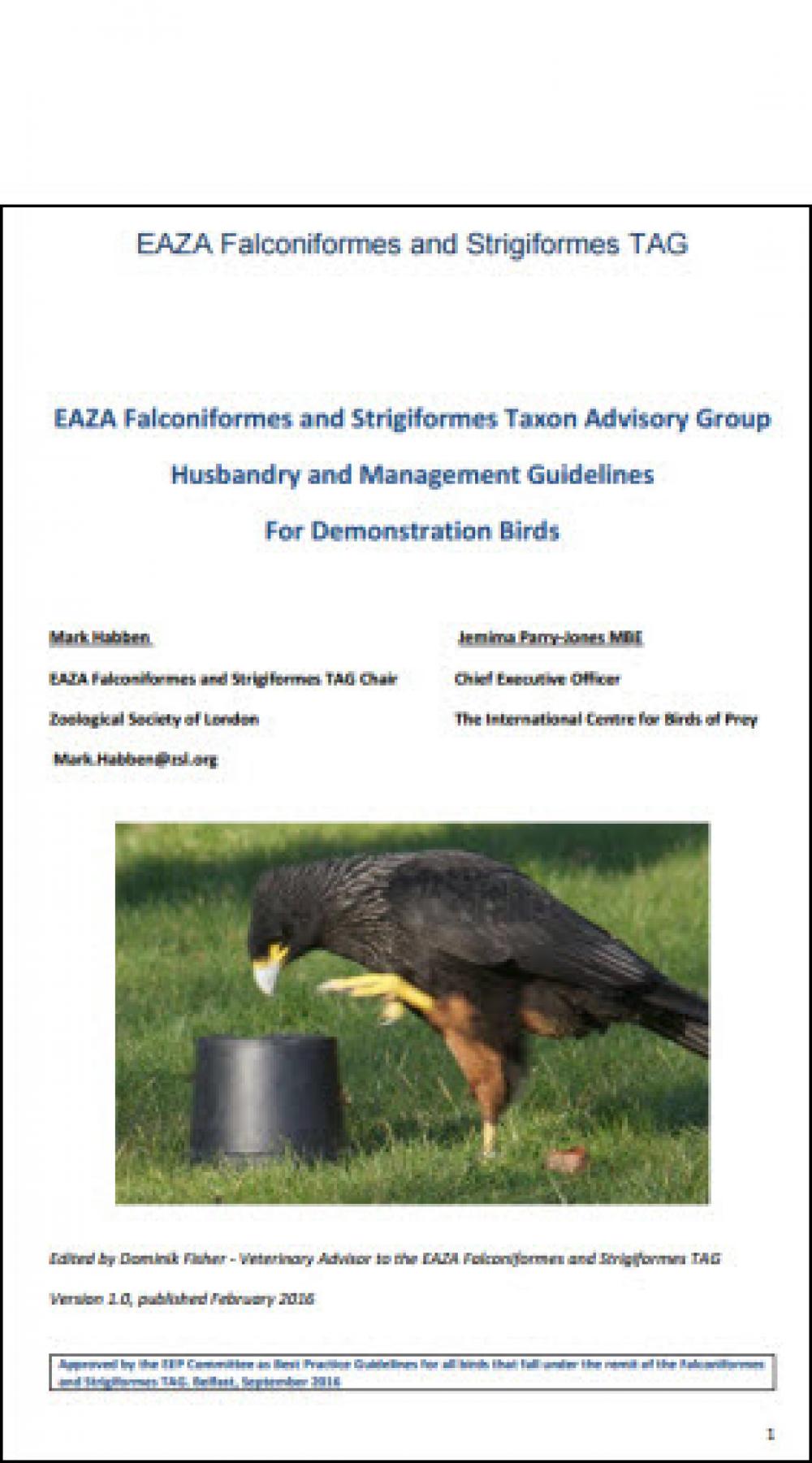
30 March 2017 _ EAZA/BIAZA response to Born Free
The Born Free Foundation have launched a campaign in the UK making demands for legislation to increase scrutiny of zoos and positioning themselves as an independent body for the regulation of zoos. EAZA and BIAZA do not accept this positioning and have distributed a press release responding to the demands made by the organisation.
21 March 2017 _ EU Zoos Directive
The European Association of Zoos and Aquaria (EAZA) has released a Position Statement on the EU Zoos Directive 1999/22/EC, the main guiding document for national zoo legislation in all EU Member States. The legislation is currently under a REFIT review involving the European Commission, National authorities, Zoo associations and other stakeholders.
The Directive clearly defines the tasks and roles of zoos and recognizes that zoos are conservation organisations contributing to biodiversity conservation in and outside of Europe. Furthermore, by outlining licensing and inspection processes for zoos, the Directive has proven effective in raising and harmonising standards across Europe. EAZA and its almost 400 Members appreciate and welcome the EU Zoos Directive as strong confirmation of and support for their role as conservation organizations. We are of the opinion that the existing EU Zoos Directive is sufficient, relevant, and has a strong purpose relating to the functioning of zoos; and therefore, it should be retained in European law.
The Position Statement reaffirms EAZA’s support for the EU Zoos Directive, identifying its strengths (such as the harmonisation of high standards in zoo practice), and its status as the only legislation demonstrating the Union’s compliance with Article 9 (on ex situ conservation) of the Convention on Biological Diversity.
The Position Statement calls for actions to support and measure effective implementation of the EU Zoos Directive, including:
- EU recognition of Member States effectively implementing the Directive at reasonable cost, and provision of opportunities for those States to support and share good practice with those that are not.
- Creation of a stakeholder platform that advises the EU Commission on supporting Member States to better implement the EU Zoos Directive.
- Licencing and inspections of zoo to be carried out by experienced officials with expert knowledge of wild animal husbandry and ex situ management as it relates to progressive zoos.
- Investigation of opportunities for EU Member States to recognize that accreditation by zoo associations like EAZA is an indicator that institutions are meeting the requirements of the EU Zoos Directive (for example as is seen in The Netherlands).
- The EU Commission and EU Member States to encourage zoos to join zoo associations to help promote high standards, share good practice and meet the requirements of the EU Zoos Directive.
- The EU Commission to investigate opportunities to allocate funding to support adequate implementation of the EU Zoos Directive.
For further details, or to request more information, please contact EAZA EU Policy Manager Daniel Nuijten
7 March 2017 _ Poachers kill rhinoceros at Thoiry
Amsterdam, the Netherlands, 7 March 2017
The European Association of Zoos and Aquaria has been informed that on the night of 6-7 March, criminals overcame security measures and gained access to Thoiry Zoo near Paris, killing one of three white rhinoceros housed at the zoo and removing one of its horns. Police have launched a criminal investigation into this shocking and deplorable crime. Thoiry is a full Member of the European Association of Zoos and Aquaria (EAZA) the membership body of the continent’s most progressive zoos; all other Members of the Association have been informed about the incident.
The criminals gained entry to Thoiry Zoo by forcing an exterior panel near to the African savannah exhibit, and made their way to the rhinoceros house where they broke open the locked metal gate and a further locked door in the interior of the building, which provided them with access to the animals. They proceeded to shoot the 4-year-old male and remove its horn, probably with a chainsaw. The animal’s second horn was partially severed, suggesting that the intruders were disturbed or their equipment malfunctioned. The other two rhinoceros were left unharmed. The crime took place despite the presence on site of 5 members of staff and security cameras.
Rhinoceros horn is highly sought after in illegal markets for traditional medicine, despite a complete lack of scientific evidence of its effectiveness in treating any medical condition. In 2015, reports suggest that 1kg of rhinoceros horn could fetch €51,000 on the black market. All 5 species and 11 subspecies of rhinoceros are threatened with extinction in the wild.
The animal killed by the poachers was born at Burgers Zoo in Arnhem, the Netherlands at the end of 2012, and arrived at Thoiry in March 2015. Since the 19th century, when it was estimated that only 25-30 Southern white rhinoceros (the subspecies of the animals at Thoiry) still lived in the wild, numbers have risen gradually to around 20,000 individuals, of which 18,000 or so live in South Africa. The protection of this endangered subspecies by breeding programmes and zoos is therefore crucial to its survival. The 250 individuals of the Southern white rhinoceros in European zoos are managed via EAZA’s European Endangered Species Programme (EEP), the highest level of management among European zoos.
South Africa has seen high levels of poaching in the last few years. In the years between 2007 and 2015, poaching of white rhinoceros has increased from 14 individuals to 1,175 individuals killed annually. In February 2017, several young rhinoceros were killed at the Thula Thula rhinoceros orphanage in South Africa, and the staff were attacked. While thefts of rhinoceros horn have increased across Europe recently, this appears to be the first time an animal has been killed by poachers at a European zoo.
Thoiry has been highly involved in the fight against poaching and trafficking of rhinoceros horns, holding a conference on the subject in 2013 which brought together multiple stakeholders from government ministries, anti-trafficking groups and conservationists. The sale of any item containing rhinoceros horn or elephant ivory is illegal in France and punishable by severe sentences. Wildlife crime is the world’s fourth biggest sector for organized crime after drug trafficking, counterfeiting and human trafficking.
For further details, contact: David Williams-Mitchell, EAZA Communications and Membership Manager at david.williams-mitchell@eaza.net
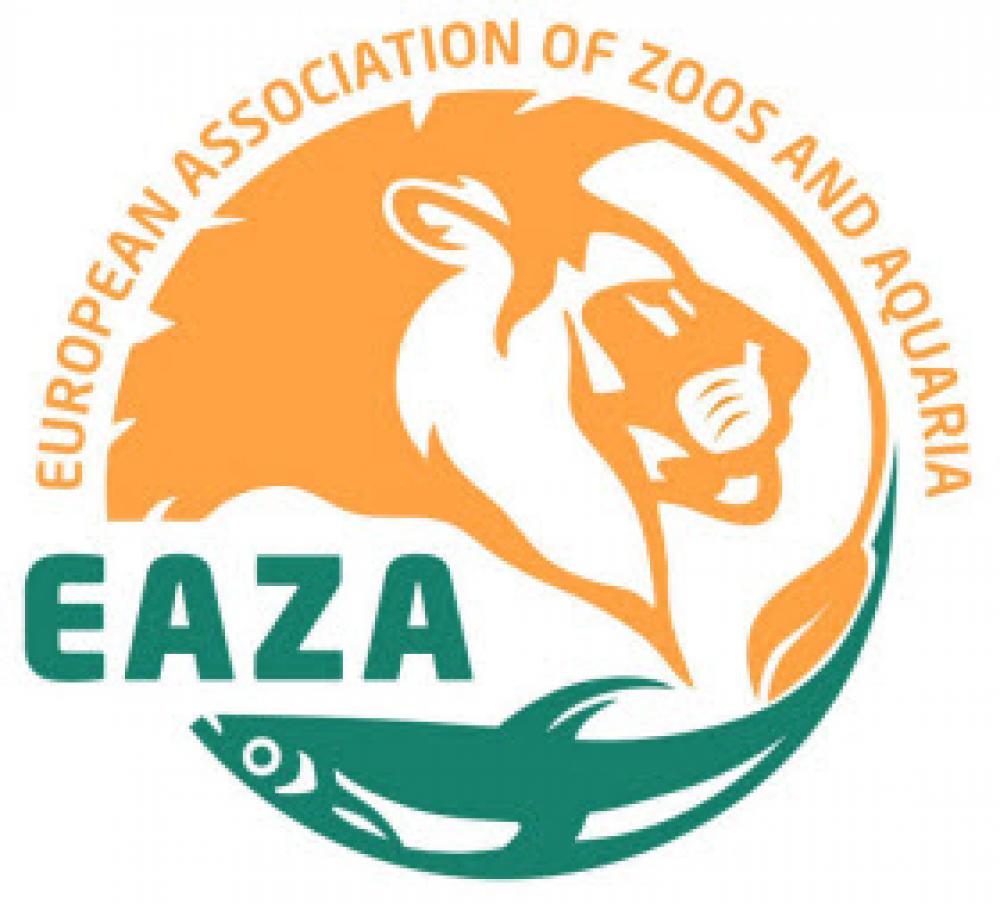
6 March 2017 _ Statement on South Lakes Safari
Amsterdam 6 March 2017
The European Association of Zoos and Aquaria (EAZA) has noted with concern reports in the British media regarding South Lakes Safari Zoo and high levels of animal mortality at the institution. South Lakes Safari Zoo is a Temporary Member of the Association, and EAZA has been involved in discussions with the zoo and Barrow Council during their review of the facility.
As part of the EAZA Accreditation Programme, a cyclic review of Members and their facilities, EAZA inspected South Lakes in 2015. While the screeners found that the institutions facilities met many of the EAZA Standards for the Accommodation and Care of Animals, the decision was made to downgrade the facility to Temporary Membership pending the outcome of the license hearing and the concerns raised therein. EAZA recognizes the need for improvements in management practice and strongly supports the institution’s change to a new management regime. It should be noted that Cumbria Zoo, who took on the operation of the zoo in January 2017, have independently applied for a zoo licence from Barrow Council, based on evidence that they have made improvements to the institution in line with the Council’s demands. EAZA is committed to working with the new managers of the zoo to ensure full compliance with our Standards and good welfare practice, and has confidence in their ability to meet our requirements.
It should be noted that the issues surrounding this case do not in any way negate the value of good zoos: figures compiled by the Association show that in 2015, our Members contributed nearly €10million to 300 conservation projects worldwide. Our Members provide educational experiences to millions of visitors every year and are involved in long-term research to judge their effectiveness. Our Members have conducted research that assists conservationists in their work as well as improving the welfare of zoo and aquarium animals. EAZA Members also contribute to the 400 breeding and monitoring programmes aimed at providing ex situ support and protection for species. EAZA Members are also active in supporting the work of the International Union for the Conservation of Nature, of which the Association is an active Member, providing staff and support for the Species Survival Commission Specialist Groups, the Commission on Education and Communication and more.
EAZA Members are expected to fulfill the welfare needs of individual animals as well as providing wider scale protection for species and we stand ready to assist any local authority in Europe and the Middle East to review standards and compliance of our Members. In common with other institutions, South Lakes Safari Zoo is required to remain up to date with the latest knowledge we have about species and their needs, a constant process of improvement. There is no doubt that there have been serious failings at the zoo; however, EAZA has confidence in the institution’s ability to make the improvements required and make a valuable contribution to the protection of nature.
For further information contact David Williams-Mitchell, EAZA Communications and Membership Manager at david.williams-mitchell@eaza.net

18 February 2017 _ EAZA BPG Dhole
The EAZA Canid and Hyaenid TAG is proud to present the EAZA Best Practice Guidelines for Dhole (Cuon alpinus). This document gives an overview of the general biology of the species and takes a closer look at conservation status and activities , feeding and hunting behaviour as well as reproduction. Other topics addressed are enclosure design, feeding and pack management as well as handling/transport issues, veterinary care and reproduction in zoos. For questions, please contact heike.maisch@erfurt.de.
EAZA Best Practice Guidelines are produced by the various TAGs to merge expert husbandry knowledge and make it widely available within and outside the borders of the EAZA community. The guidelines show best practice standards, which EAZA zoos aim at achieving. They have been compiled using a template and made user-friendly to facilitate reading and the finding of necessary information. The guidelines are of particular interest when building new enclosures, when deciding upon the nutrition of animals or when seeking information on the biology of the species. EAZA members strive to house animals adequately to their needs and to give advice where needed to help further animal welfare. Please also check out the other EAZA Best Practice Guidelines available and view the EAZA Standards for the Accommodation and Care of Animals in Zoos and Aquaria.
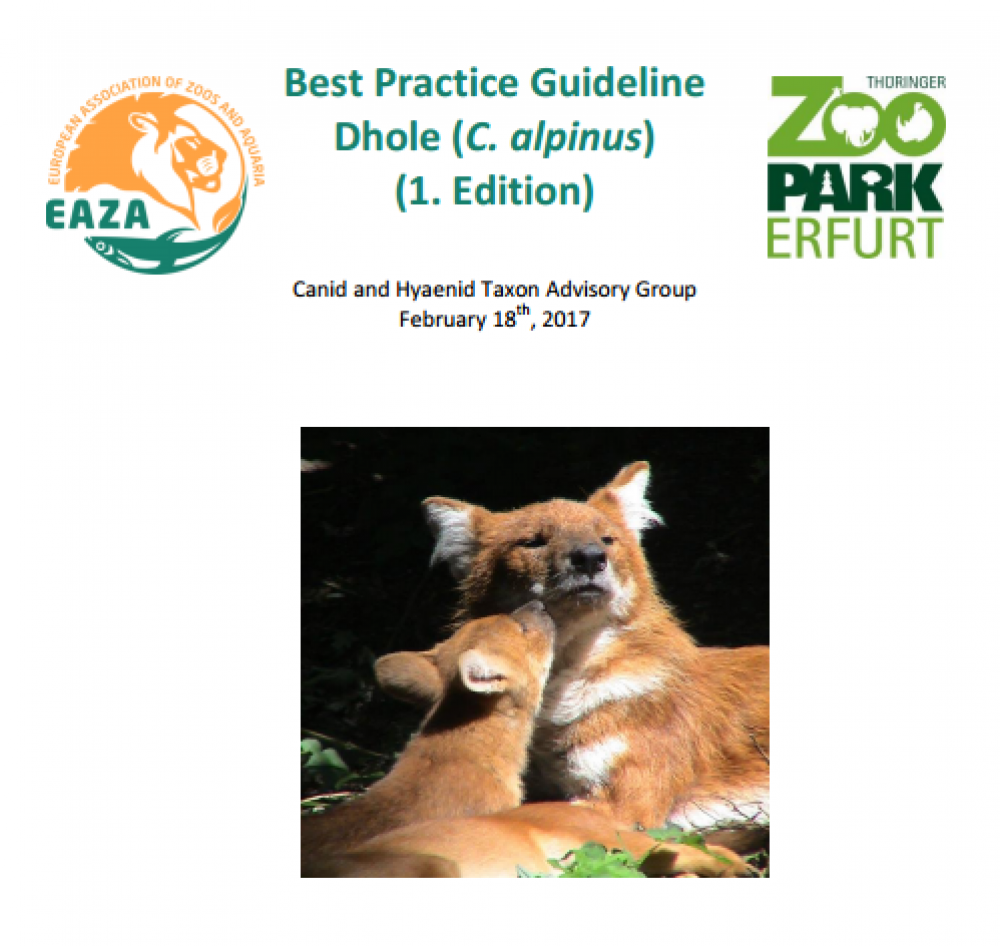
February 2017 _ EAZA BPG for Gorilla
The EAZA Great Ape TAG is proud to present the EAZA Best Practice Guidelines for Gorilla (Gorilla gorilla gorilla). This document reflects our current knowledge about general biology and keeping requirements to provide adequate levels of well being for Gorillas, the biggest size great ape species, in human care. It provides information about different aspects that should be taken into account when managing gorillas in human care to ensure a healthy and self-sustaining population, as well as helping the development of a global “ex situ conservation” programme. Furthermore, information is given about the situation of the species in the wild and field conservation work in host countries to which all the zoo institutions keeping gorillas are encouraged to provide support following the IUCN strategy of One Plan Approach. For questions, please contact mabello@bsmsa.cat .
EAZA Best Practice Guidelines are produced by the various TAGs to merge expert husbandry knowledge and make it widely available within and outside the borders of the EAZA community. The guidelines show best practice standards, which EAZA zoos aim at achieving. They have been compiled using a template and made user-friendly to facilitate reading and the finding of necessary information. The guidelines are of particular interest when building new enclosures, when deciding upon the nutrition of animals or when seeking information on the biology of the species. EAZA members strive to house animals adequately to their needs and to give advice where needed to help further animal welfare. Please also check out the other EAZA Best Practice Guidelines available and view the EAZA Standards for the Accommodation and Care of Animals in Zoos and Aquaria.
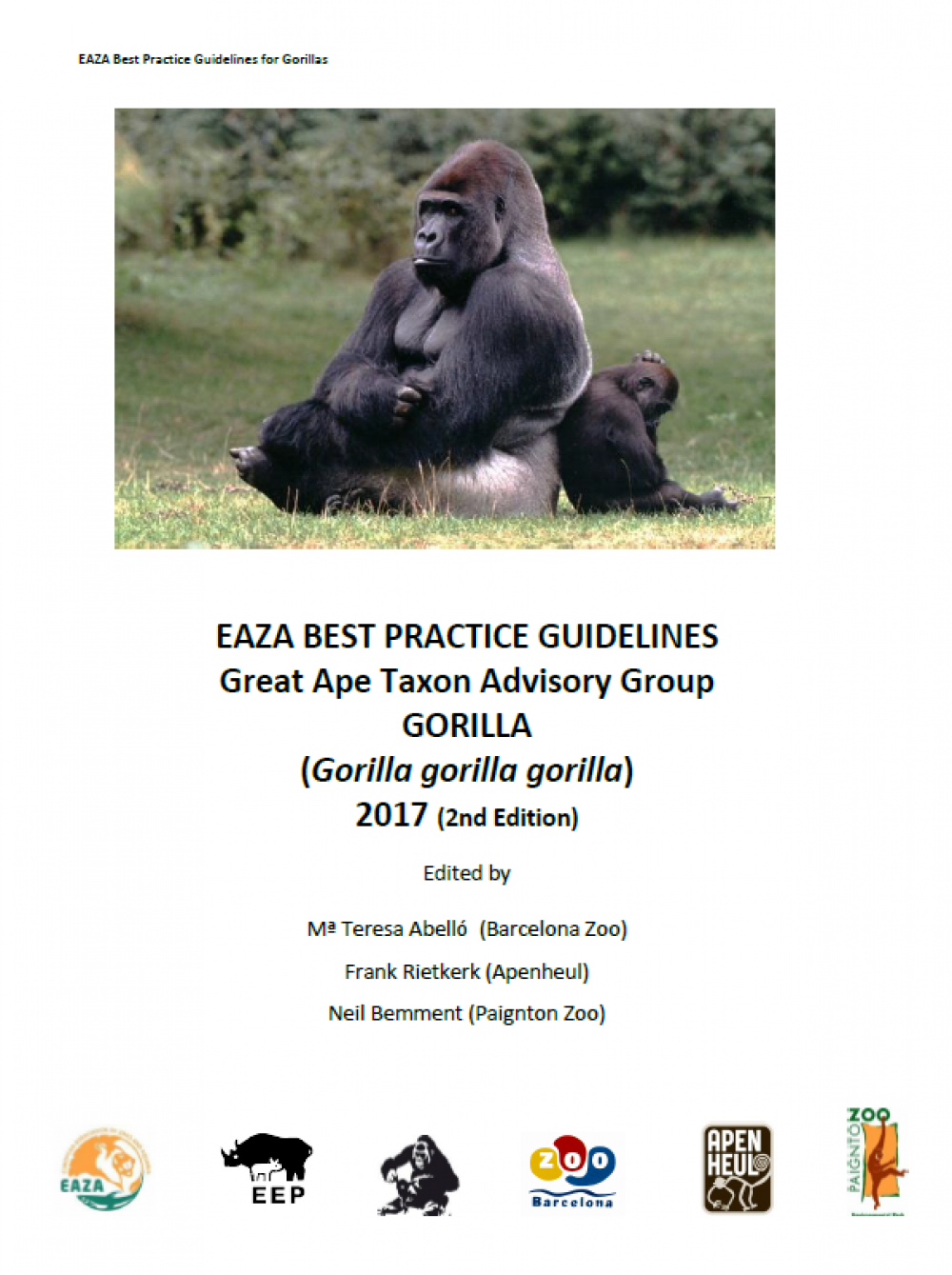
2016 _ EAZA BPG for Callitrichids
The EAZA Callitrichid TAG is proud to present the Spanish version of EAZA Best Practice Guidelines for Callitrichidae, which have a clear focus incorporated on integrating and supporting field conservation work in host countries. This version has been published in collaboration with the Latin American Zoo and Aquaria Association (ALPZA). For questions, please contact miranda.stevenson@btopenworld.com.
EAZA Best Practice Guidelines are produced by the various TAGs to merge expert husbandry knowledge and make it widely available within and outside the borders of the EAZA community. The guidelines show best practice standards, which EAZA zoos aim at achieving. They have been compiled using a template and made user-friendly to facilitate reading and the finding of necessary information. The guidelines are of particular interest when building new enclosures, when deciding upon the nutrition of animals or when seeking information on the biology of the species. EAZA members strive to house animals adequately to their needs and to give advice where needed to help further animal welfare. Please also check out the other EAZA Best Practice Guidelines available and view the EAZA Standards for the Accommodation and Care of Animals in Zoos and Aquaria.
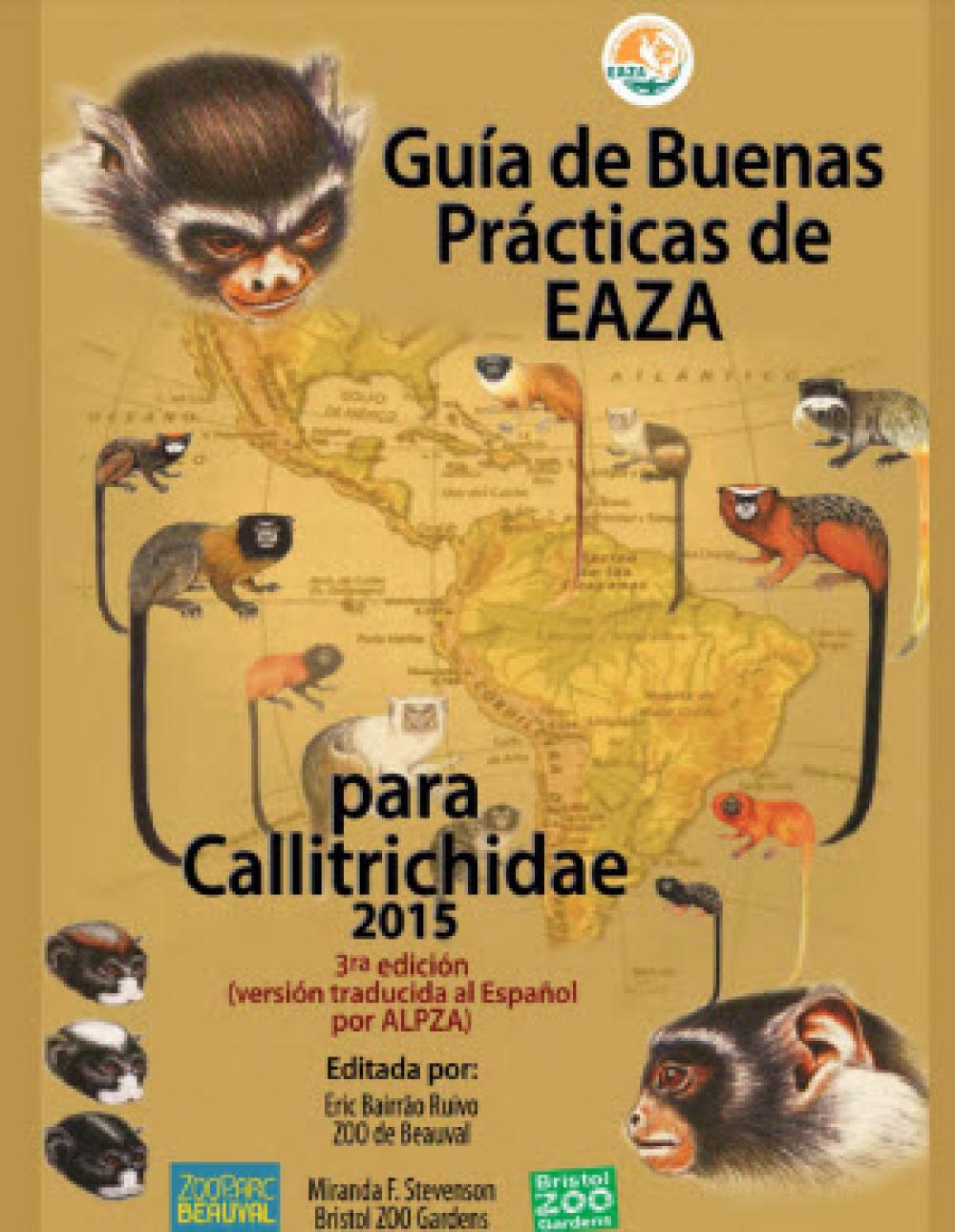
28 Sept 2016 _ CITES Approves Pangolin protection
Good news! Today, the UN Convention on International Trade in Endangered Species of Wild Fauna and Flora (CITES) has voted to protect all eight species of pangolins - small and reclusive scaly mammals being driven to near extinction by unsustainable poaching. Pangolins will be uplisted to CITES Appendix I, which bars international trade and provides for better domestic protection in key countries such as Vietnam and China.
"Rarely has CITES been so united. This action today was much-needed if pangolins are to survive and may be one of the most important outcomes of this meeting," WildAid CEO Peter Knights said from the CITES Conference of the Parties in Johannesburg. "That these proposals to protect pangolins came from countries like Vietnam and were passed with near-unanimous support is highly encouraging. The challenge now is law enforcement and demand reduction, but the uplisting will help both. Penalties will now be much higher in key countries."
WildAid is already engaged in reducing demand in China and Vietnam in celebrity led campaigns and has released footage of pangolin capture and trade. Our report Pangolins: On the Brink identifies consumer demand for pangolin scales and meat as the primary driver of the eight pangolin species' sharp decline throughout Africa and Asia.
Demand for pangolin scales (used in Traditional Chinese Medicine) as well as pangolin meat, considered by some as a delicacy, is highest in China and Vietnam. Though there is no scientific evidence to support alleged curative properties or the keratin scales, a 2015 WildAid survey found that 70% of Chinese believe pangolin products have medicinal value; scales are used to "cure" rheumatism, skin disorders and wound infections. In Vietnam, 64% of survey respondents said they had heard about the "curative" properties of pangolin scales.
Pangolins are especially vulnerable to poaching because of their slow reproductive rate, their sensitivity to capture-induced stress and an instinct to curl into a ball when threatened, rather than try to escape. Because of a specialized diet pangolins are very hard to maintain in captivity; commercial breeding is not a viable means of supply.
Source: Wildaid.org
Photo credit: Paul Hilton for WildAid
August 2016 _ EAZA BPG for European otter
 The EAZA Small Carnivore TAG is proud to present the EAZA Best Practice Guidelines for the European otter (Lutra lutra). This species is a Carnivore from the family of Mustelidae and one of the 13 species of otters living in the world. The conservation actions for this species need to be sustained because of the lack of information from many parts of its range and the sensitivity of this species to changes. The information in this Best Practice Guideline has come from a variety of sources including the experience of the author and holders of this species. Among many other topics, special attention is paid to enclosure design, boundaries and group composition. For questions, please contact Elody Rey at erey@mnhn.fr
The EAZA Small Carnivore TAG is proud to present the EAZA Best Practice Guidelines for the European otter (Lutra lutra). This species is a Carnivore from the family of Mustelidae and one of the 13 species of otters living in the world. The conservation actions for this species need to be sustained because of the lack of information from many parts of its range and the sensitivity of this species to changes. The information in this Best Practice Guideline has come from a variety of sources including the experience of the author and holders of this species. Among many other topics, special attention is paid to enclosure design, boundaries and group composition. For questions, please contact Elody Rey at erey@mnhn.fr
EAZA Best Practice Guidelines are produced by the various TAGs to merge expert husbandry knowledge and make it widely available within and outside the borders of the EAZA community. The guidelines show best practice standards, which EAZA zoos aim at achieving. They have been compiled using a template and made user-friendly to facilitate reading and the finding of necessary information. The guidelines are of particular interest when building new enclosures, when deciding upon the nutrition of animals or when seeking information on the biology of the species. EAZA members strive to house animals adequately to their needs and to give advice where needed to help further animal welfare. Please also check out the other EAZA Best Practice Guidelines and view the EAZA Standards for the Accommodation and Care of Animals in Zoos and Aquaria.
2016 _ EAZA BPG for Lake Oku frog
The EAZA Amphibian TAG is proud to present the EAZA Best Practice Guidelines for the Lake Oku frog (Xenopus longipes). The information in this Best Practice Guideline has come from a variety of sources including a literature review, the experience of the authors and others in the captive husbandry of Xenopus longipes as well as direct observations of the species in the field. Among many other topics, special attention is paid to monitoring and managing of water quality during the rearing of tadpoles. For questions, please contact Ben.Tapley@zsl.org
EAZA Best Practice Guidelines are produced by the various TAGs to merge expert husbandry knowledge and make it widely available within and outside the borders of the EAZA community. The guidelines show best practice standards, which EAZA zoos aim at achieving. They have been compiled using a template and made user-friendly to facilitate reading and the finding of necessary information. The guidelines are of particular interest when building new enclosures, when deciding upon the nutrition of animals or when seeking information on the biology of the species. EAZA members strive to house animals adequately to their needs and to give advice where needed to help further animal welfare. Please also check out the other EAZA Best Practice Guidelines available and view the EAZA Standards for the Accommodation and Care of Animals in Zoos and Aquaria.
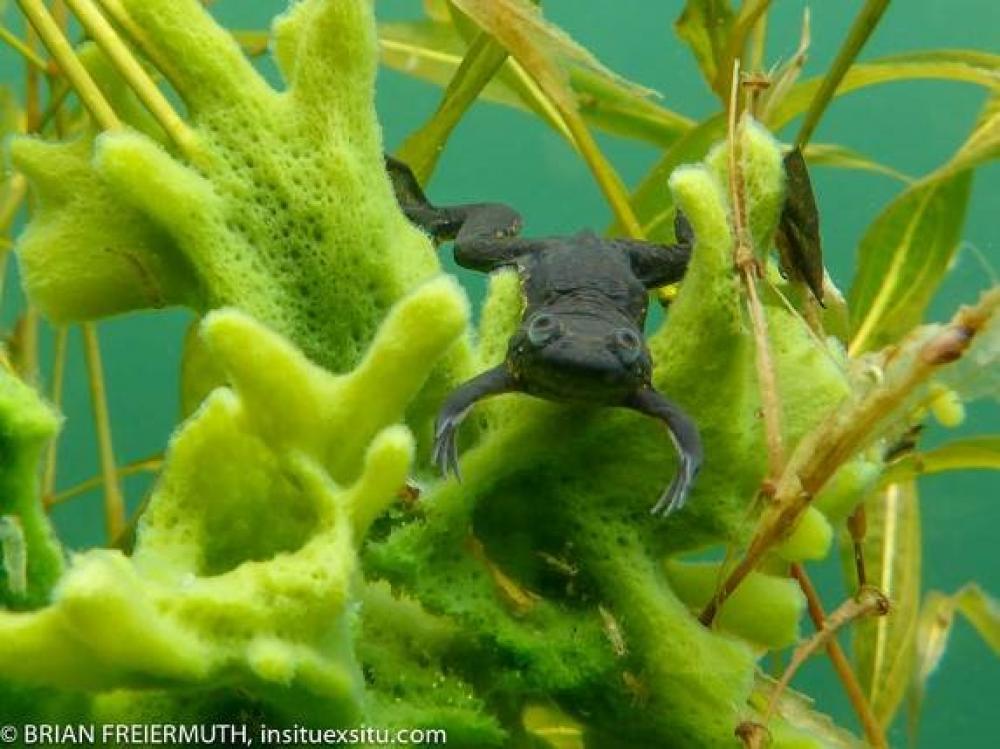
July 2016 _ EAZA BPG for Amazon parrot
The EAZA Parrot TAG is proud to present the EAZA Best Practice Guidelines for the Ecuadorian amazon parrot (Amazona lilacina). This species is found only on the central and south west coast of Ecuador and is listed as Endangered on the IUCN Red List. The species is managed in human care as a European Endangered Species Breeding Programme (EEP) which acts as an insurance for the wild population. Ecuadorian Amazon parrots have been kept and bred well in human care for the last thirty years. These EAZA Best Practice Guidelines document methods for the successful husbandry of this species (and might also be useful for other amazon species). Recommendation boxes in this document highlight the important key points of each section, which readers should pay particular attention to. For questions, please contact Becca Biddle at b.biddle@chesterzoo.org.

EAZA Best Practice Guidelines are produced by the various TAGs to merge expert husbandry knowledge and make it widely available within and outside the borders of the EAZA community. The guidelines show best practice standards, which EAZA zoos aim at achieving. They have been compiled using a template and made user-friendly to facilitate reading and the finding of necessary information. The guidelines are of particular interest when building new enclosures, when deciding upon the nutrition of animals or when seeking information on the biology of the species. EAZA members strive to house animals adequately to their needs and to give advice where needed to help further animal welfare. Please also check out the other EAZA Best Practice Guidelines available and view the EAZA Standards for the Accommodation and Care of Animals in Zoos and Aquaria.
22 March 2016 _ Conservation collaboration
International conservationists and the global zoo community are joining forces with the Indonesian national government for the first time to support species conservation in the country. Zoo associations in South-East Asia, Europe and North America are linking up with the International Union for Conservation of Nature (IUCN), species specialists and departments of the Indonesian government. It’s likely that you have never heard of the species in question.
The banteng and anoa are wild cattle, while the babirusa is a pig; the teeth of males grow upward through the roof of the mouth and curve toward their eyes. All are threatened with extinction, with two species being listed classified as Endangered on the IUCN Red List of Threatened Species. This joined-up approach to conservation will bring together the skills of top zoos –conservation breeding, animal husbandry, veterinary treatment, education, population biology – with those of local experts, conservationists and sanctuaries on the ground. Conservationists call it the One Plan approach, with international zoos and local experts sharing knowledge to work in a more effective way.

This collaboration is truly international; the aim is to build healthy global zoo numbers as insurance against the loss of populations in the wild. Banteng, anoa and babirusa are all declining due to hunting for food and because of habitat loss.
Tony Sumampau, representative of the Indonesian Zoo Association, added: “While the global zoo community is working with partners on educational efforts related to over hunting, we can make sure that there is a viable global captive population whose genetic diversity represents the genetic diversity in the wild. Because space and resources in zoos in only one nation or region are limited, a global collaboration may be able to ensure that enough animals can be managed to form a sustainable captive population.”
“The Global Species Management Plan (GSMP) under the auspices of the World Association of Zoos and Aquariums (WAZA) offers an unique platform for partners from the global zoo community, in this case the South-East Asian Zoo Association (SEAZA), the European Association of Zoos and Aquaria (EAZA) and the Association of Zoos and Aquariums (AZA) in North America, to work together with partners and authorities in Indonesia contributing to the conservation of these three species”, says Simon Tonge, chair of the WAZA Committee for Population Management.
James Burton, chair of the IUCNSSC Asian Wild Cattle Specialist Group, says: “This is the first global collaboration between zoos for the conservation of banteng, anoa and babirusa. While zoos cannot provide solutions for all conservation problems, they are one important piece in the puzzle. It will not be an easy task, but if we all work together, we have much better chances to save these species.”

Puja Utama, representative of the Indonesian government, adds: “Indonesia is very proud of its unique wildlife. We are confident that our national conservation action plans in combination with the efforts of the global zoo community can help to save threatened species in Indonesia.”
“Babirusas are an important icon of Indonesia’s unique biodiversity and a species with high socio-cultural value. The IUCN SSC Wild Pig Specialist Group is very excited about this opportunity to achieve real positive conservation outcomes for the species”, says Erik Meijaard, chair of this group.
3 March 2016 _ Action Plan on Wildlife trafficking
The European Association of Zoos and Aquaria (EAZA) welcomes the EU Action Plan against Wildlife Trafficking, which was released this Friday 26 February. The plan outlines the EU’s strategy on wildlife trafficking, a necessary step in reducing the role of Europe as a hub for the illegal trade in wildlife. Wildlife trafficking puts further pressure on endangered species all over the world and the EU, as the world’s biggest trade bloc has made clear its commitment to tackling this threat.
The EU Action Plan against Wildlife Trafficking has 3 clear priorities:
- Preventing wildlife trafficking and addressing its root causes
- Making implementation and enforcement of existing rules and the fight against organised wildlife crime more effective
- Strengthening the global partnership of source, consumer and transit countries against wildlife trafficking.
EAZA was at the launch event on 2 March and is looking forward to working with the European institutions and Member States closely on the reduction and eventual elimination of wildlife trafficking. The steps EAZA accredited zoos take in ensuring that they do not acquire wildlife illegally has been recognized in the TRAFFIC study which supports this EU Action Plan. EAZA and its members have been identified as being able to contribute extensive experience and knowledge to help fight this global threat to biodiversity. EAZA urges Member States to take the action plan seriously and allocate sufficient resources towards its implementation.
15 January 2016 _ Pole to Pole achievement

The EAZA Pole to Pole Campaign was officially closed during the EAZA Annual Conference Wroclaw last September. The campaign ran from September 2013 to September 2015 and it can be said great things have been achieved. Many people across the globe (not necessarily zoo visitors) actively joined in the Pull the Plug pledge as well as signing the petition. An overwhelming number 250 participating institutions worldwide signed up for the Pole to Pole Campaign and showed the commitment and involvement of the zoo community towards combating climate change. It was amazing to observe the enthusiasm of all colleagues who produced educational materials, including colouring sheets, factsheets, infographics, stickers, informational brochures and leaflets as well as logos. The resources were translated from English into seven European languages including Czech, Swedish and Polish.
Until this date (Mid-January 2016) 3123 individuals registered the pledge to pull the plug of a total number of 12214 electronic devices (which are not in use) for the upcoming months. This means that together we have saved 338762 kilowatt-hours of electricity (!) which equals:
- Co2 emissions of 250.906 pounds of coal burned
- Co2 emissions of 26.285 gallons of gasoline consumed
- Carbon sequestered by 191 acres of forest in one year (Source: EPA)
The pledges of the participants were registered in a database and monitored throughout the course. Participants received occasional reminders and at the end of the pledging period successful participants received an exclusive digital photograph for personal use, taken by Daniel J.Cox/Natural Exposures and generously made available to EAZA Pole to Pole Campaign. The second year the ‘2 degrees is the limit’ petition initiative was launched. We’ve collected 17.160 signatures in total (both hand-written and digitally). The signatures, printed on recycled paper with a total weight of almost 10 kg, have been handed over to the Secretariat of the United Nations Framework Convention at the intergovernmental meeting on climate change in Paris in December last year. The Paris climate summit, COP21, resulted in an Agreement to curb climate change! Yet there is still is a lot to be done, but the global willingness to tackle the problem of rapid climate change is evident. Back in 2013, before the Pole to Pole Campaign kicked off, the campaign team identified and formulated the following objectives:
- Secure the participation of as many zoos and aquariums in as many countries as possible
- Affect positive behaviour change amongst: zoos, schools and zoo visitors
- Run as near a carbon-neutral campaign as possible
- Present a petition calling on world leaders to reduce CO2 emissions to below 350 ppm
We can say this awareness campaign has been successful. But this is only the beginning, action is still required. That’s why it has been decided to keep the Pole to Pole Campaign website up and running, you can continue to take the pledge and resources will continue to be available at no cost. News and developments about climate change as well as new initiatives from the zoo and the conservation community will be published right here on the campaign site. Lots of zoos will continue spreading the word and organizing awareness activities. The campaign team would like to express gratitude to all zoos and individuals who were involved in making this campaign a success. Thanks to your effort and dedication we have been able to make a difference! Please continue to use energy wisely, visit the Pole to Pole Campaign website regularly and stay connected!
12 January 2016 _ Odense Zoo animal dissections
Amsterdam, The Netherlands, 12 January 2016
European Association of Zoos and Aquaria (EAZA) member Odense Zoo have informed us of their intention to carry out dissections of animal cadavers over the weekend of 16-17 January 2016. The animals, a 9 month old male lion culled in 2014 and year old male sitatunga culled in 2015, will be dissected in front of a self-selected audience, with commentary from zoo guides and the veterinarian carrying out the procedures.
The animals were culled humanely and in accordance with EAZA’s Culling Statement (2015); their dissection cannot compromise their welfare. As we have noted previously, dissection of animals provides a useful scientific learning experience that is consistent with Danish cultural norms. While we recognize that some cultures are less comfortable than others with the display of animal cadavers, EAZA strongly supports the view that scientific education is an essential part of learning. Provided that animal welfare is respected, educators have the right to use all tools that are consistent with the culture in which they operate.
It is EAZA's position that culling of animals is one of a range of scientifically valid solutions to the long term genetic and demographic sustainability of animal populations in human care. This management tool is given equal consideration in the effective management of populations, along with others such as contraception and translocation. Each case is considered by the member institution on its own merits, and in conjunction with breeding programme coordinators where applicable. The animals in question were culled as the result of a comprehensive review of the options, and the procedures were carried out humanely and without compromise of the animal's welfare.
EAZA members contribute significantly to the protection of species and habitats across the world through breeding programmes and collaborative work with field conservationists, supported by scientific research. This is a challenging mission and one that requires them to make hard choices from time to time, including (where permitted) culling animals that cannot contribute to a sustainable population or further the goals of species conservation. EAZA members also strive to maximize the learning outcomes of visitors to our institutions, both in the fields of conservation awareness and more specific biological education; in this case, and bearing in mind the validity of the choice to cull the animals as well as the cultural context of Denmark’s educational system, we believe that the use of the animal cadavers for public education of anatomy is in line with these aims.
For further information please contact:
David Williams-Mitchell, Communications and Membership Manager, EAZA
david.williams-mitchell@eaza.net
+31 205200750
About EAZA: The European Association of Zoos and Aquaria (EAZA) is the membership organisation of Europe’s most progressive zoological institutions, representing 389 institutions, federations, conservation partners and companies. EAZA works to promote cooperation between its members in conservation, education and research and is an active advocate of nature protection at the European Union. EAZA administers the world’s most comprehensive ex situ conservation programme portfolio, protecting 400 species through population management to insure genetic and demographic diversity over the long term, and providing an essential resource for integrated conservation worldwide

8 December 2015 _ EAZA BPG for Euproctus platyceph

The EAZA Amphibian TAG is proud to present the EAZA Best Practice Guidelines for Sardinian brook salamander (Euproctus platycephalus). The information in these Best Practice Guidelines has come from a variety of sources including an extensive literature review, the experience of the authors and others in the captive husbandry, as well as direct observations of the species in the field. Amphibian husbandry is a rapidly evolving field and there are many aspects that still require further research.
Key husbandry points covered in this version are egg and larva sensitivity to mildew and pathogenic fungus, seasonal temperature regimes and monitoring and management of water quality. Please visit the EAZA website for these guidelines. For questions, please contact Ben.Tapley@zsl.org.
EAZA Best Practice Guidelines are produced by the various TAGs to merge expert husbandry knowledge and make it widely available within and outside the borders of the EAZA community. The guidelines show best practice standards, which EAZA zoos aim at achieving. They have been compiled using a template and made user-friendly to facilitate reading and the finding of necessary information. The guidelines are of particular interest when building new enclosures, when deciding upon the nutrition of animals or when seeking information on the biology of the species. EAZA members strive to house animals adequately to their needs and to give advice where needed to help further animal welfare. Please also check out the other Best Practice Guidelines currently available and view the EAZA Standards for the Accommodation and Care of Animals in Zoos and Aquaria.
17 Nov 2015 _ EAZA BPG Rhinoceros unicornis
The EAZA Best Practice Guidelines for Greater one-horned rhino (Rhinoceros unicornis) are now available on the public part of the EAZA website. These EAZA Best Practice Guidelines reflect the long-term experience gained for this species in human care and summarizes the latest information available. The first section focusses on the biology and field data of Greater one-horned rhinoceroses. This information is essential in order to translate the rhinos’ needs into good husbandry, good husbandry is needed to keep a healthy population in human care, which itself serves as a backup for the wild population. The information also shows that ex situ breeding efforts and support for in situ rhino conservation projects have become an important role for each zoo keeping rhinos. The current poaching crisis is dramatic and threatens the in situ populations. Cooperation between in situ and ex situ rhino conservation partners is more important than ever and it is one of the aims of the EAZA Rhino TAG to link in situ rhino conservation efforts with ex situ rhino conservation efforts.
The second section deals with the zoo management of this species. Greater one-horned rhinoceroses have been kept successfully in zoos for over sixty years now. The key husbandry issues in this species are chronic foot disease and aggressive behaviour during introduction for breeding. Both subjects are discussed in great length in this paper and ideas are presented on how to prevent foot problems and how to improve breeding. Specific attention is also paid to the feeding regime of this species.
EAZA Best Practice Guidelines are produced by the various TAGs to merge expert husbandry knowledge and make it widely available within and outside the borders of the EAZA community. The guidelines show best practice standards, which EAZA zoos aim at achieving. They have been compiled using a template and made user-friendly to facilitate reading and the finding of necessary information. The guidelines are of particular interest when building new enclosures, when deciding upon the nutrition of animals or when seeking information on the biology of the species. EAZA members strive to house animals adequately to their needs and to give advice where needed to help further animal welfare. Please also check out the other Best Practice Guidelines currently available and view the EAZA Standards for the Accommodation and Care of Animals in Zoos and Aquaria.
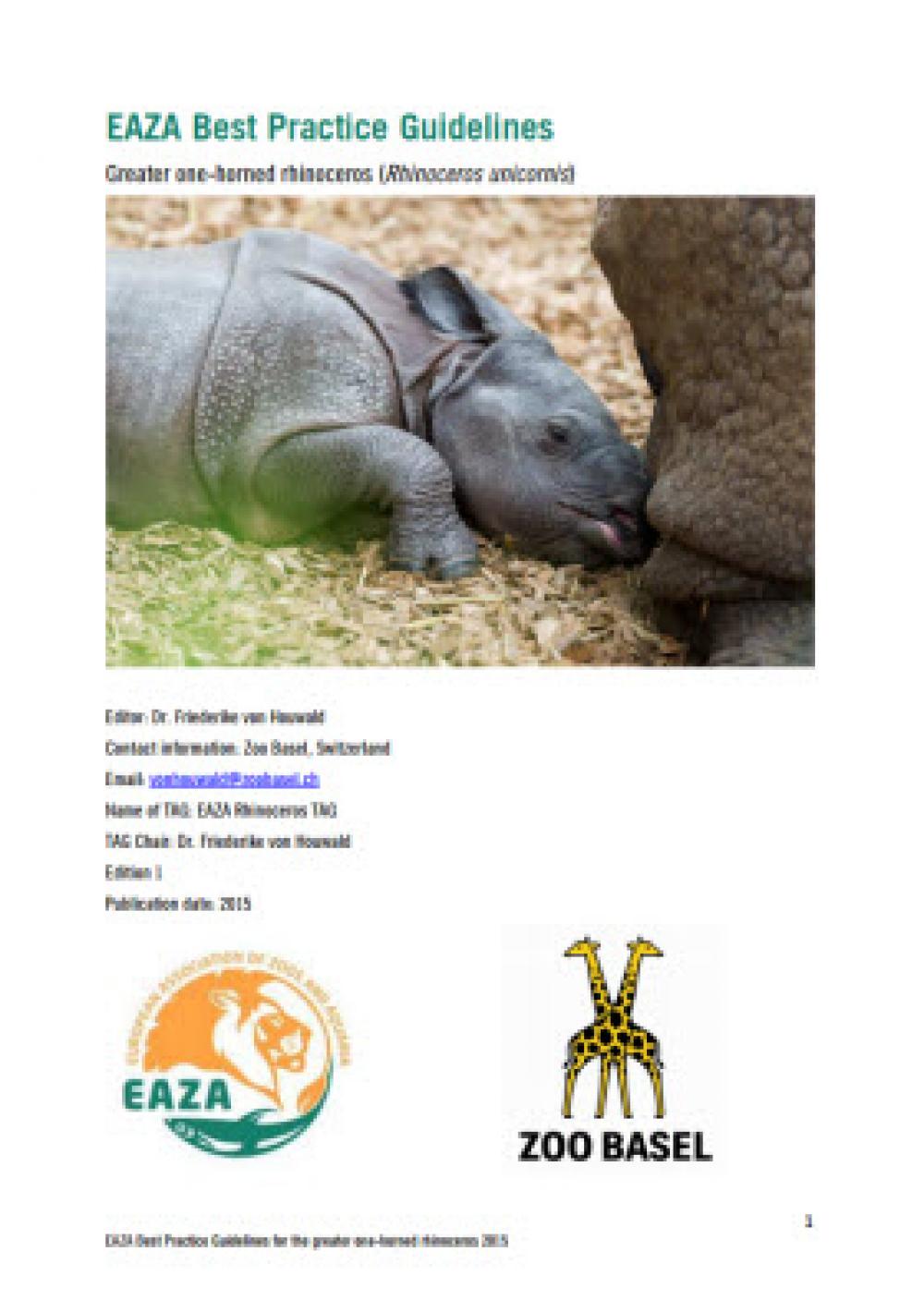
2 November 2015 _ WAZA launches new strategies
The World Association of Zoos and Aquaria will publish its new strategies on conservation and animal welfare. These documents are guiding strategies for all zoos and aquariums throughout Europe and across the World. You can view the full WAZA press release here:
http://www.waza.org/en/site/pressnews-events/press-releases/commit-care-and-inspire-waza-launches-two-new-strategies-on-animal-welfare-and-conservation-1444636794
October 2015 _ EAZA BPG for Red panda
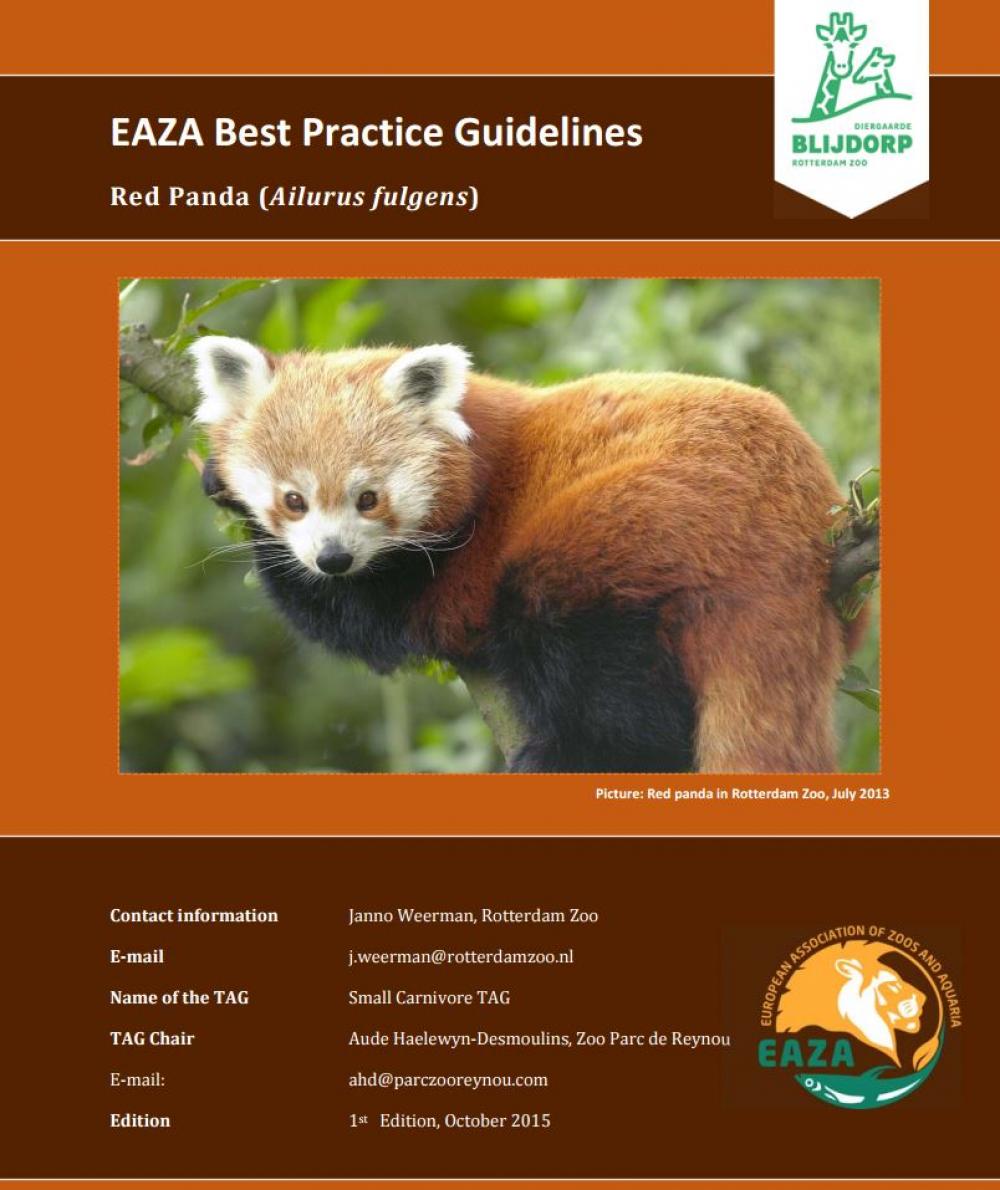
The EAZA Best Practice Guidelines for Red Panda (Ailurus fulgens) are now available on the public part of the EAZA website. These guidelines reflect current knowledge of keeping this species in human care. The Guidelines include current knowledge of the species in the natural environment using the most recent taxonomic information. A section on management in zoos covers housing, feeding, social environment, breeding and behavioural management. As managed programmes rely on the movement of animals between zoos, advice on capture, handling and transport is provided. A veterinary section also provides information on current knowledge on medical care. It is essential that all keepers of these wonderful animals frequently refer to these Guidelines and contact Taxon Advisory Group (TAG) members with any concerns or queries.
EAZA Best Practice Guidelines are produced by the various TAGs to merge expert husbandry knowledge and make it widely available within and outside the borders of the EAZA community. The guidelines show best practice standards, which EAZA zoos aim at achieving. They have been compiled using a template and made user-friendly to facilitate reading and the finding of necessary information. The guidelines are of particular interest when building new enclosures, when deciding upon the nutrition of animals or when seeking information on the biology of the species. EAZA members strive to house animals adequately to their needs and to give advice where needed to help further animal welfare. Please also check out the other Best Practice Guidelines currently available and view the EAZA Standards for the Accommodation and Care of Animals in Zoos and Aquaria.
12 October 2015 _ Statement on Lion Dissection
Amsterdam, Netherlands, 12 October 2015
The European Association of Zoos and Aquaria (EAZA) has been informed by its member Odense Zoo, Denmark, that they will be conducting a dissection on a lion culled at the zoo nine months ago. The animal was culled after numerous attempts to find another institution of similar high welfare standards to take it were unsuccessful. The dissection will be carried out on Thursday 15 October in front of a self-selected audience of local people and away from general zoo visitors.
It is EAZA's position that culling of animals is one of a range of scientifically valid solutions to the long term genetic and demographic sustainability of animal populations in human care. This management tool is given equal consideration in the effective management of populations, along with others such as contraception and translocation. Each case is considered by the member institution on its own merits, and in conjunction with breeding programme coordinators where applicable. The animal in question was culled as the result of a comprehensive review of the options, and was carried out humanely and without compromise of the animal's welfare.
EAZA further takes the position that the dissection of an animal carcass for educational purposes is a valid choice of the zoo. It should be noted that public understanding of a species, including the challenges it faces in the wild and the nature of its anatomy can be well served by such demonstrations. EAZA recognizes that such demonstrations may not be as widely accepted in some cultures as in others; regardless, it should be noted that the culling itself was carried out transparently, without any reaction from the media and public of any country. The welfare of an animal that has been humanely culled cannot be compromised by the decision to dissect its carcass.
EAZA believes that the future of the natural world, which is in a crisis unparalleled in human history, can be secured only if younger generations are well educated and realistic about the challenges faced by ecosystems and species. Different countries may not agree on the best way to achieve this outcome; nonetheless, attempts by some in the media to generate moral outrage regarding this scientifically valid management tool and accepted educational opportunity will not serve to protect endangered species - and may even hinder educators and conservationists in their mission to do so. Consequently, EAZA welcomes all scientific approaches to increasing public awareness of nature that are appropriate for the country in which the zoo is located.
For further information please contact:
David Williams-Mitchell, Communications and Membership Manager, EAZA
david.williams-mitchell@eaza.net
+31 205200750
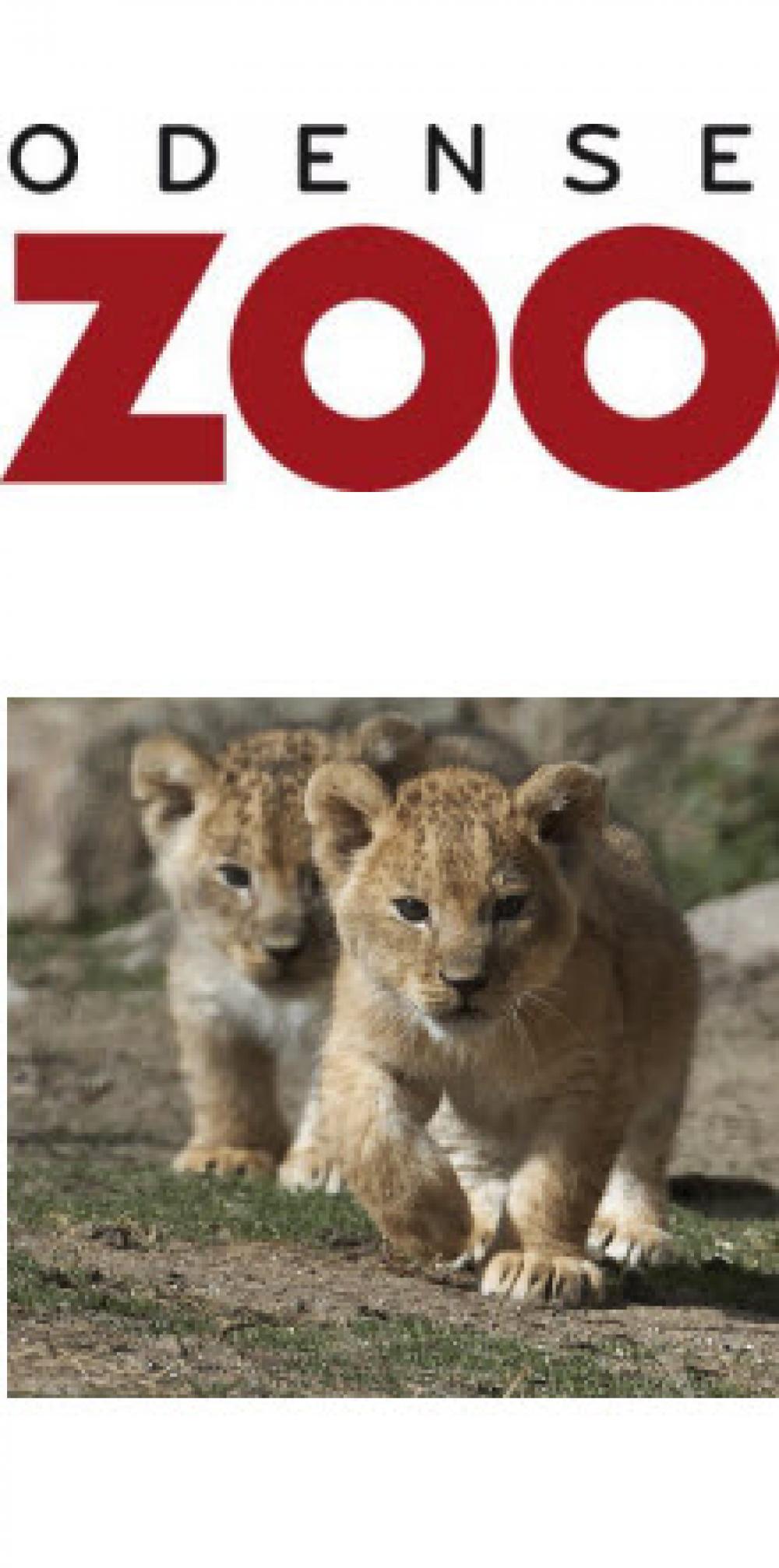
25 July 2015 _ Theft of golden lion tamarins
We have been informed by Zoo Krefeld in Germany of the theft of 1.2 golden lion tamarins (Leontopithecus rosalia). The animals were stolen from the facility in the night from 23 to 24 July and authorities have been notified.
Nonetheless, we would ask you to contact Dr. Wolfgang Dressen wolfgang.dressen@zookrefeld.de if you are approached regarding the possible purchase of these animals, or if any information comes to light that may help with the recovery of these animals.
An overview of identification information on the stolen animals can be found here.
(Picture of Golden Lion Tamarin by Valerie, Creative Commons)
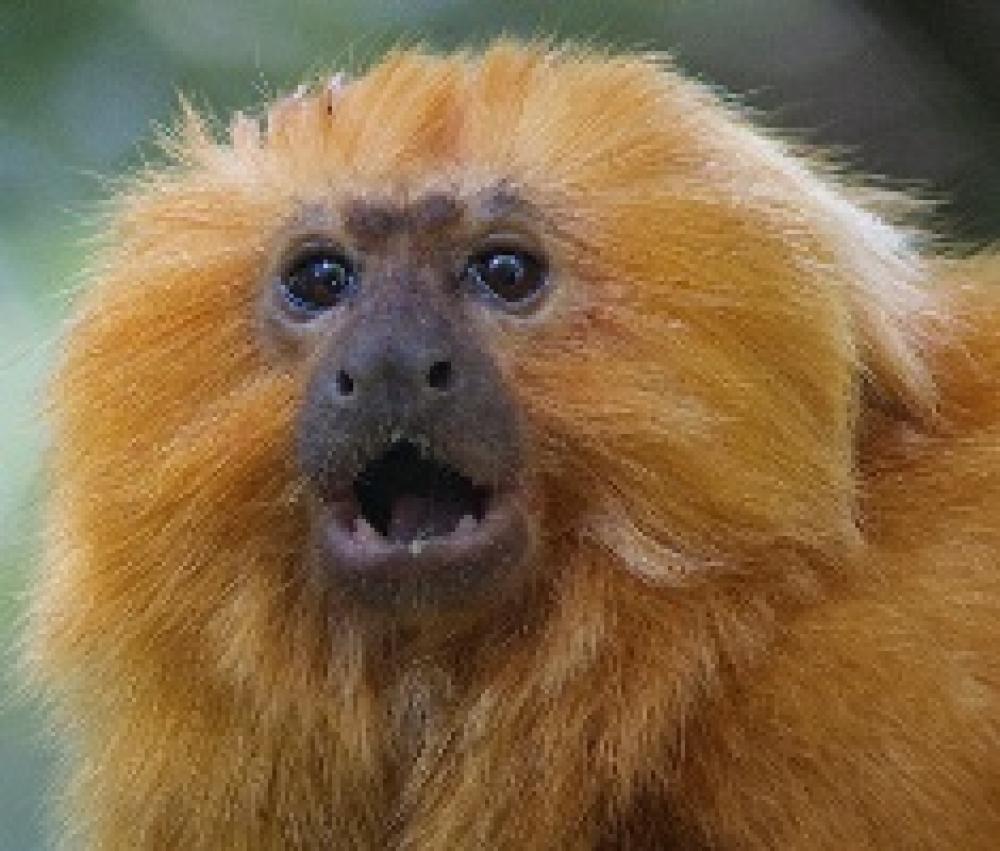
23 July 2015 _ New JZAR Issue published
EAZA's Journal of Zoo and Aquarium Research has just published its latest issue at http://www.jzar.org/jzar. We invite you to review the Table of Contents here and then visit our web site to review articles and items of interest.
Articles in this issue include:
- Metastasising osteosarcoma in an eastern white pelican (Pelecanus onocrolatus) - Fieke Marije Molenaar, Taina Strike, Jo Dodds, Karla Berry, Trevor J. Whitbread, Jamie Graham
- Gastrointestinal parasites and ectoparasites in wild Javan slow loris (Nycticebus javanicus), and implications for captivity and animal rescue - E. Johanna Rode-Margono, Marlies Albers, W. Wirdateti, A. Abinawanto, K. A.I. Nekaris
- Effect of post-gut loading time on the macro-nutrient content of three feeder invertebrate species - Victoria Marie Gorst, K. Mitchell, K. M. Whitehouse-Tedd
- Facial thermography is not useful in assessing body temperature in common squirrel monkeys (Saimiri sciureus) in comparison to rectal temperatures - Romain Pizzi, A. Dowling, D. Brown, S. Girling, S. Pearson, H. Bacon, Y. Martinez Pereira
- Reproductive trends of captive polar bears in North American zoos: a historical analysis - Erin Curry, Sina Safayi, Randi Meyerson, Terri Roth
- The use of a gonadotropin releasing hormone antagonist in captive sand tiger sharks, Carcharias taurus, and the serum levels of the antagonist and reproductive steroid hormones - Alan D. Henningsen, Brent R Whitaker, Katherine E. Kight, David l. Hess, Catherine Hadfield, Yonathan Zohar
Thanks for the continuing interest in our work,
Dr Eluned Price, Durrell Wildlife Conservation Trust
July 2015 _ Zoos Directive Good Practices Document
EAZA welcomes the recent publication of the European Commission ‘EU Zoos Directive Good Practices Document’. Numerous stakeholders and experts contributed to this work, including EAZA members and the Executive Director. The document aims to support Member States achieve the overall objective of strengthening the role of zoos in the conservation of biodiversity.
It also specifically recognises the good initiatives of EAZA in strengthening contributions to biodiversity conservation. The work of EAZA Members in producing guidelines to help improve husbandry standards and professional competence in zoos, contributing to scientific research, and specific case studies from EAZA Members are used to highlight best practice.
This is a great example of the cooperative opportunities between EAZA and the European Union to support effective implementation of the EU Zoos Directive as well as demonstrating the high standards of EAZA zoos and aquariums across Europe. EAZA will continue to work with the European Union and Member States to build capacity and strive for zoos and aquariums to achieve their full potential for biodiversity conservation.
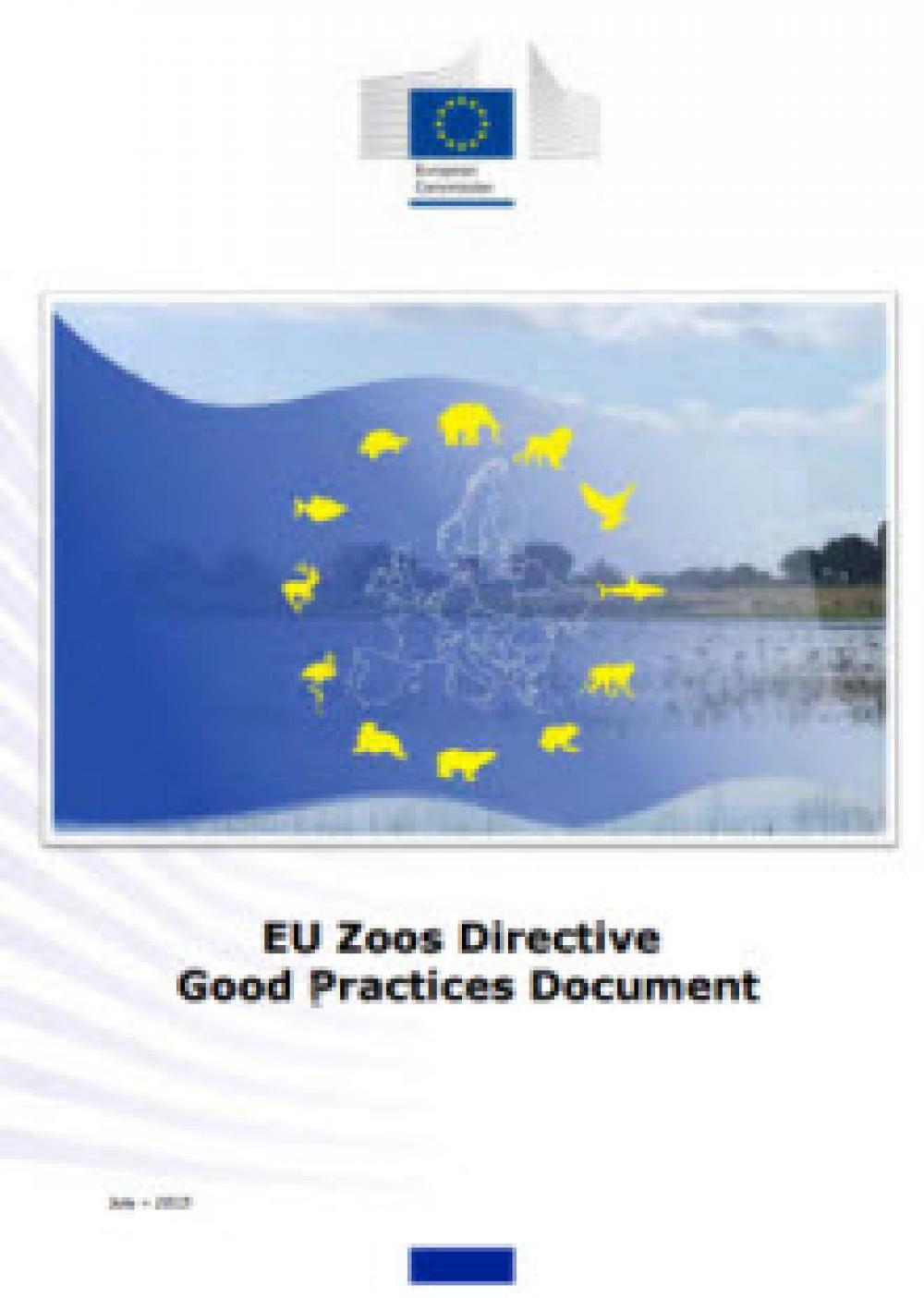
14 June 2015 _ Catastrophic flooding in Tbilisi
The European Association of Zoos and Aquaria (EAZA) is shocked to hear of the flooding of the city of Tbilisi and its zoo, which resulted in the death of three members of zoo staff, and the escape and shooting of many of its animals. Tbilisi Zoo is a Candidate for Membership of EAZA, and has been developing its facilities and working practices to meet the standards of the Association under the supervision of an experienced mentor.
EAZA members Prague Zoo (which has had experience of reacting to catastrophic floods) Jerusalem Zoo and Ramat Gan Safari Park, will be sending teams of keepers and veterinarians to Tbilisi to assist with efforts to recapture and contain escaped animals, and make the facility safe for the staff and animals as the water recedes. EAZA is obliged to repeat the call from the Director of Tbilisi Zoo, Zura Gurielidze, for citizens to remain calm and contact authorities if they encounter any wild animal in the city or the surrounding area.
On no account should private citizens attempt to recapture or shoot the animals, which should be considered dangerous. EAZA is gathering information from sources in Tbilisi and elsewhere to build a complete picture of the situation and will be in contact with our members to ascertain how we as a community can most effectively assist. At this stage, we do not know if and when the zoo site will become safe enough for the return of staff and animals; nonetheless, EAZA and its members will do everything possible to assist the local authorities and the management of the zoo ensure the security of the facility and the welfare of the animals.
The EAZA community offers its sincere condolences to the families of the staff who lost their lives. The Association also offers its condolences to the staff of the zoo who have lost not only their friends and colleagues, but also many of the animals they cared for.
